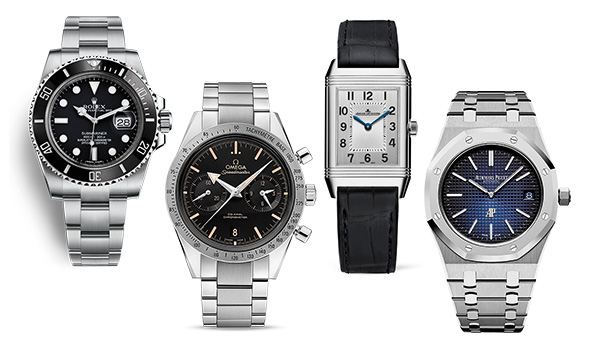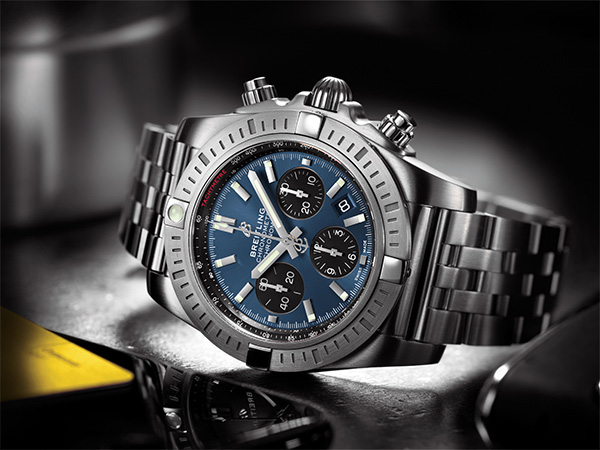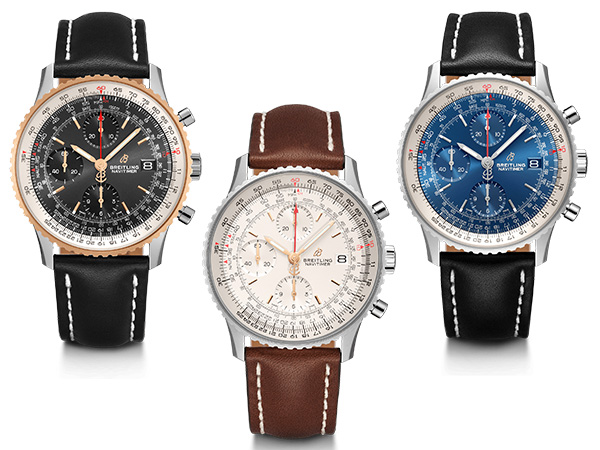First of all, what exactly are we talking about?
The icon’s origins are religious but the word icon has since also become associated with a person – or an object – that stands for a trend or a period. An icon is therefore a reference, a guide, an example to follow. Several things are needed to earn this status: it needs to “stand out” and become known as the origin of a trend or be an incontestable representative of it. Like its religious precursor it therefore has a powerful image that resonates beyond a circle of connoisseurs. It conveys a message, attracts attention and needs to be understood by the majority.
Besides being “visual”, the icon is also temporal. It is something that lasts and its images even gets stronger with time. To be an icon, therefore, a person or object needs to survive over time, resist its effects and continue to stand out, regardless of any new references, trends or fashions. Like a phoenix, it may die, but it will also be reborn just at the right moment. People will always come back to it.
But is a strong image and the ability to stand the test of time sufficient to enter this pantheon of marketing?
Not on its own, no. Other elements quickly come into play. The image has to be more than just strong. It has to be universal. In other words, it needs to cross borders and unify people. Everyone needs to “know” the icon and be able to refer to it.
It then loses its status as an object to become an emotion.
With almost divine status, the icon is reassuring because it is stable and we think we know it. It thus becomes untouchable. Trying to change it would involve huge risks. Since it is an emblem, it is also an easy target that can attract hate and grudges.
So it’s not all rosy in the land of celebrity, but the word continues to entice people and remains one of the foundations of the marketing vocabulary.
And since we are talking about marketing, let’s ask another question: who creates an icon?
Some people think that you just need to associate the word with an object to give it this distinction. And that is the main problem. Nobody can decree whether something or someone is an icon. They often become one in spite of themselves.
No object was ever created to become a reference.
It may well be the fantasy of every product manager, but intention alone does not confer the status, which comes only with time. So there is a delay that is difficult to quantify or pre-empt. Who would have thought that the Citroën 2CV, the VW Beetle, Coke or the Weston 180 moccasin would become such legends? Nobody.
Because of their image and presence, icons get all the attention. We only think about them and we refer to them all the time. But while it is immortal and extremely powerful, the icon is also a threat. It is dangerous because it can kill – not quickly and violently but slowly, with a lethal kiss.
Many have tried to cast a shadow over it. They have, however, disappeared and the icon is still there. Remember the courageous souls who wanted to change the Coca Cola recipe in 1985? Others wanted to create competition, or try to knock the icon off its pedestal. But their attempts were in vain. Competition only has a slim chance of winning out, and rare are the brands who can lay claim to several icons.
Icons foster jealousy. We want to get close to them and if that proves impossible, we will find other ways. How? By turning to false icons. The icon is therefore the origin of counterfeits, which fill a “sentimental” void by fulfilling the dreams of those who couldn’t have the original.
So the icon is an asset as much as it is a threat. And the watch industry knows this only too well…
The good thing about this subject is that you only have to write “iconic watch” and everyone will have a name to add to the – long – list of these sacred monsters. Submariner, Speedmaster, Reverso, Royal Oak... The list is, of course, much longer. These watches have all marked their times and are alive and well today, their power of attraction undiminished. We feel so close to them that we give them nicknames (Pepsi, Pogue, Subzilla, Anakin, Willard, Ultraman) and their own existence that transcends that of the brand behind them (we say the Sub or the Speedy without even mentioning the brand).

They have come to dominate even though their origins did not suggest such success. How many people were divers when the Sub was launched? Why should a racing driver’s watch that went into space become such a huge success? How did a watch reserved for elite polo players become a classic of watchmaking? Who could have imagined that a few screws and an octagonal bezel would change the destiny of a brand?
A destiny, an image, a name. That is the trilogy of horological dreams.
But there is a dark side to every success story.
Some brands have today become prisoners of their own masterpieces. They have taken over and killed their masters. Like Frankenstein, they eschew any form of control and live their own lives. We simply have to “deal with it” and accept their influence. Could Jaeger-LeCoultre live without the Reverso; could Panerai survive without the Luminor? Probably not.
Why Breitling?
For me, Breitling’s icon was originally called the Chronomat.
In 1984 Breitling relaunched this model from the 1940s. The first Chronomat chronographs served as the inspiration for the Navitimer that we will come to later. But since the heart has its reasons that reason does not know, for me the Chronomat is still the model in its 1980s guise! I spent hours admiring this watch that stood apart from its peers for a number of reasons. Its size, its roundness, its distinctive bezel and its “professional” versions for various air display teams like the Frecce Tricolori and the Patrouille de France. I kept admiring it until I finally had my first “nice” watch on my wrist: a Chronomat with white dial on a dark green calfskin strap.

Breitling is still best known as a chronograph brand, with two models in the collection that have left their mark in the history of watchmaking: the Chronomat and the Navitimer (plus its Cosmonaut version).
The Grenchen-based brand was born in 1884 and its research made a great contribution to the development of the chronograph. Breitling invented the first independent pusher in 1923, adding a second one for resetting the chronograph a few years later. Thus was born the classic chronograph design with two pushers and a crown. It is still the same today. Breitling also made its contribution to the first self-winding chronograph movement in 1969 with the Calibre 11, which was developed in partnership with Heuer and Buren. It was also Breitling that continued to develop quartz technology with the Aerospace and electronic technology with the Emergency.

Today Breitling continues to build on its two historical pillars but also looks for alternatives like the new Navitimer 8, which is a courageous attempt to rethink an icon by removing its signature element: the bezel.
The Breitling Navitimer 1 – 41 mm: without a size change!
The story of the Navitimer starts with its ancestor the Chronomat in 1942. This was when Breitling launched what could be described as the first smartwatch, which incorporated various calculators that were essential for pilots at the time.
10 years later, the Navitimer took the idea of the professional instrument further with a revision of the slide rule that added several functions. The Navitimer as we know it today was born. Numerous versions followed, with manual, then automatic and later quartz movements, as well as different sizes over the decades (41mm, 43mm, 46mm, 48mm, 49 mm). Over the years Breitling added other functions such as GMT and perpetual calendar.

Throughout all this, the Navitimer was never forgotten and made a comeback in the 1990s with a unique design.
One thing that is interesting – but also frustrating – about iconic watches is that their look is unchanging – even when it changes! In its numerous years of service, the Navitimer has changed a lot but barely evolved. It’s quite easy to summarise: slide rule, round case, prominent pushers, three counters and defined lugs.
This is what the new Navitimer 1 offers us. Its size has been reduced back to its historical proprotions, which also take current trends into account. So it is 41mm in diameter, the same as its ancestors. The smallest version of the previous model was 43mm, and those 2mm make a big difference.
Apart from this change, our “new” classic Navi 1 offers all that is needed of a horological monument.

It is available in steel-gold or steel and a choice of black, blue and cream/silvered dials. I am a fervent supporter of the black version, like the 806 from 1952 but I also have a soft spot for the two-tone version. I have to admit that I have never been a big fan of steel-gold watches but I think this combination works on the Navitimer (although I can’t explain why), especially with the red centre seconds hand, which reinforces the warmth of this watch and its vintage aspect.
The calibre 13 chronometer movement that powers it is Breitling’s version of the famous Valjoux 7750, which is recognisable by the arrangement of the counters at 12, 6 and 9 o’clcok and the date at 3 o’clock. It can be seen through a sapphire crystal case back.
The watch is offered with a leather strap in black, blue or brown with a pin buckle.
In short, it is a great watch with a size that is suited to all wrists.
What does the devil’s advocate think?
Speaking of an icon in front of the devil is a big risk! He hates them!
On a more serious note, although this Navi is accomplished, there are a few niggles.
For me, the main issue is the leather strap. Breitling has always had beautiful, thick and solid straps that oozed quality. But when the watch is fresh out of the slimming club, the thick strap no longer works. It doesn’t fit with the slenderness of the case and its diameter. It looks out of place, and that’s a shame.
I would love to see a fine mesh bracelet, or a beige canvas strap with vintage stitching, or aged leather. The good news is that Breitling has given this Navitimer 41 a pin buckle, which means that there are plenty of options to correct this – minor – issue.
I would also have liked to see the transparent case back and the date disappear. The date overcrowds the Navitimer’s already complicated dial and the transparent case back doesn’t really add anything. I would have preferred a smooth and simple case back like that of its predecessors.
An iconic style to go with your iconic watch!
It’s an easy choice. You need references from fashion and clothing to go with your Navitimer.
No shirt, just a polo shirt. And it can therefore only be Lacoste. The brand was born in 1927, but didn’t start selling its polo shirts until 1933. Go for a re-edition of the L12.12, the first in a long series. It should be sober, in white or blue.
Then chinos or slacks. Again, we are talking about an historical item of clothing, which evolved from military equipment. It’s hard to know which brand made it popular, so you are free to choose, as long as you choose the right colour, which should be in line with its other name: khaki.
For the belt, Hermès and its “H” buckle immediately springs to mind. And for the shoes, the choice is between the aforementioned 180 moccasins by J.M. Weston and the Adidas Robert Haillet sneakers launched in 1965 and later renamed… Stan Smith.
For the jacket, nothing could be more iconic than a blazer. The combination of jeans and blazer was popularized by Andy Warhol and Fred Hugues, both known for their appreciation of British fashion. So the blazer could come from Turnbull and Asser (the Beeston in cashmere) or Chester Barrie (why not the Kingly in a wool, linen and silk mix?).
Before heading off to the airport, don’t forget that the Navitimer is a pilot’s watch – so pack your Keepall bag (launched in 1930) by Louis Vuitton and jump into a 1968 Fiat 500 L, two other fine examples of iconsx!





